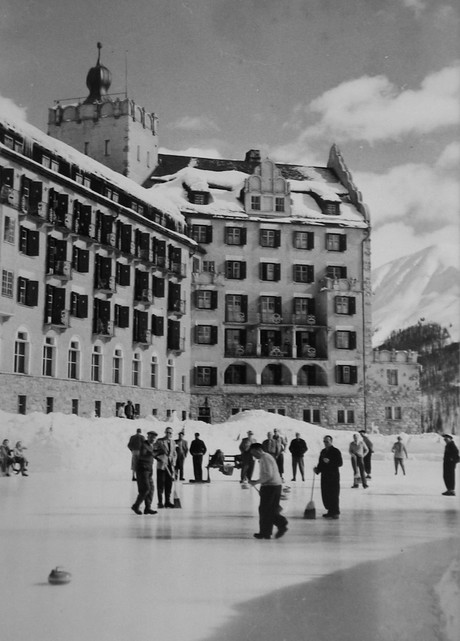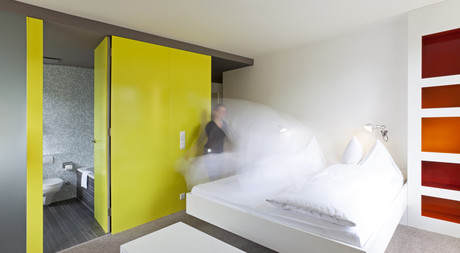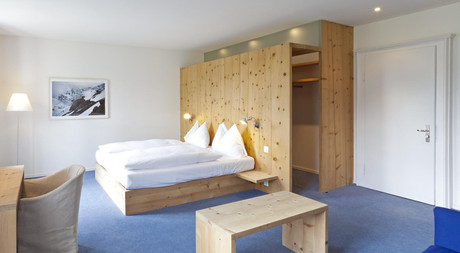TRADITION AND MODERNISM
In the architecture of the Castell, tradition meets modernism – Grisons home style, absolute world class.
The design is influenced by three great architects:
In 1912/13, Nicolaus Hartmann laid the foundation for the striking building. The roof of the tower burned down and was then replaced by the characteristic battlements.
The major renovations of 2004/05 bear the hallmarks of UN-Studios Amsterdam (Chesa Chastlatsch, hamam, half of the rooms) and the local architect’s office Ruch in St. Moritz (the other half of the rooms in a modern Alpine style).
Additional splashes of colour were added by architect Gabrielle Hächler and artist Pipilotti Rist in 1998 with their "Red Bar", as well as Tadashi Kawamata with the springy wooden terrace that connects visually to the rock pool. Another landmark is the open tower – actually a light installation offering stunning views of the sky – by the American artist James Turrell.
Nicolaus Hartmann Jr.
The buildings by the St. Moritz architect Nicolaus Hartmann Jr. (1880-1956) represent a highly visible and renowned part of the history of Swiss architecture of the 20th century. With his "Grisons home style", he has largely influenced the architectural culture of Grisons and the Engadine over almost a century during the great economic boom of the Grisons tourist centres.
He deliberately drew on regionalist, tradition-bound designs and utilised local materials and craftsmanship. Throughout his life, he remained a representative of the Homeland Security Movement.
Aside from the hotel industry, the Rhaetian Railway was his biggest client. He was also commissioned for several restoration projects of fortresses castles. Alongside the Castell, the most important buildings in the Engadine include the Hotel La Margna in St. Moritz, the railway station on the Alp Grüm, the Giovanni Segantini memorial, which was carefully restored in 1998/99 by Hans-Jörg Ruch, the Engadine Museum, the church in St. Moritz-Bad, the Alpenrose in Sils and the Lyceum Alpinum Zuoz.
UNStudio, Amsterdam
They built the Erasmus Bridge, Rotterdam’s famous landmark, and enchanted the world of architecture with the "Möbius House" in Het Gooi. They generated a lot of publicity due to the hydra-like tangled towers, which they proposed together with United Architects for Ground Zero. They also built the new Mercedes Museum in Stuttgart and the Chesa Chastlatsch on the hillside above Zuoz.
The UNStudio, run by Ben van Berkel and Caroline Bos, is today firmly established on an international scale. Van Berkel is now on the rise from star to superstar. For him, building style in the classic sense is passé: "Today is about aesthetics, principles and the intrinsic values of architecture – organisation of rooms, atmosphere, and movement. It's about how we can ideally use all the knowledge to fulfil the needs of the people."
Ruch Architektur, St.Moritz
Numerous outstanding renovations and new buildings in the Engadine carry the same hallmarks – those of Hans-Jörg Ruch. With his keen sense for design, he brings together opposites to form contrasting relationships, and skilfully renovates historic Engadine houses; he has built holiday resorts, banks, a library, hotels, consumer temples, a power substation and even a Swiss Alpine Club hut.
Artificiality and crude mash-ups are an abomination for this well-travelled cosmopolitan. Indeed, in his choice of materials, Hans-Jörg Ruch limits his creations to raw concrete and iron, glass, one type of wood, and one type of stone. Less is better – more is far too much.








